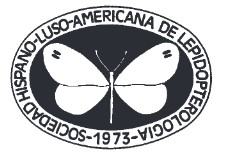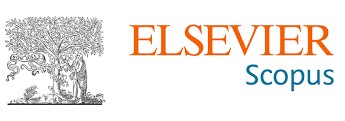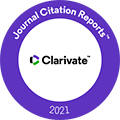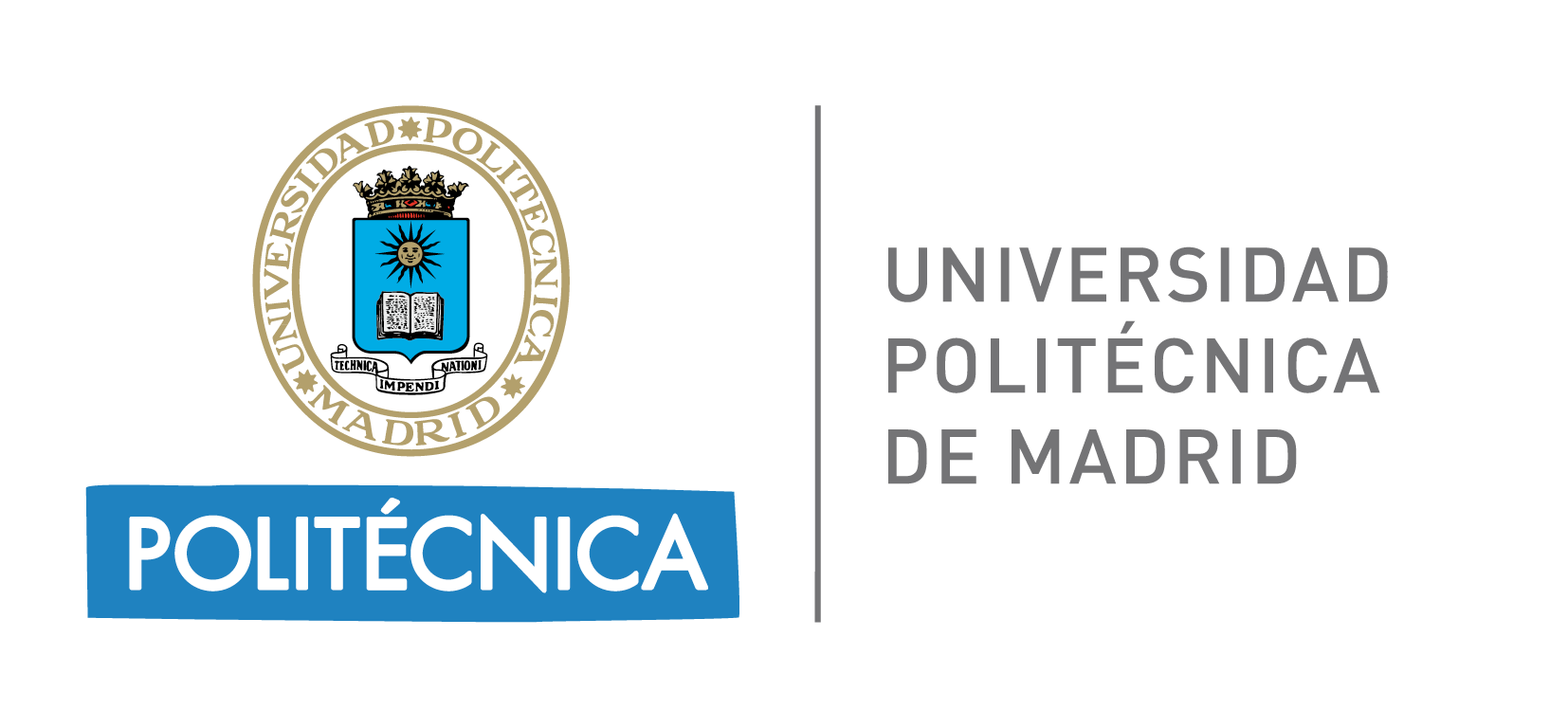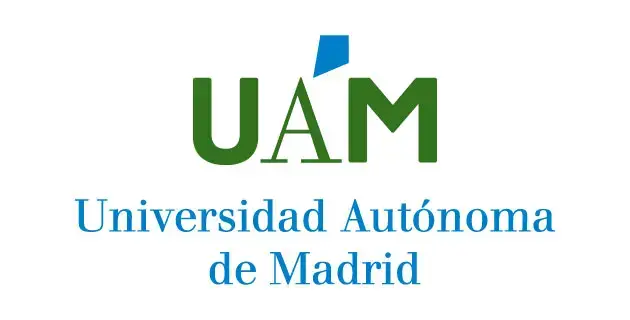Abundancia de Tuta absoluta (Meyrick, 1917) y sus enemigos naturales en cultivos de tomate en invernaderos de diferentes modos de producción (Azores, Portugal) (Lepidoptera: Gelechiidae)
DOI:
https://doi.org/10.57065/shilap.437Palabras clave:
Lepidoptera, Gelechiidae, Tuta absoluta, enemigos naturales, nivel de infestación, modo de producción, Azores, PortugalResumen
Tuta absoluta (Meyrick, 1917) (Lepidoptera: Gelechiidae) es una de las principales plagas de los cultivos de tomate (Solanum lycopersicum L.) producidos en los invernaderos de las Azores. A pesar de las principales preocupaciones por los cultivos, no se dispone de ningún estudio sistemático que describa la dinámica de población de T. absoluta y sus enemigos naturales. El objetivo de este estudio fue comparar la abundancia de la plaga (huevos y larvas) y sus enemigos naturales nativos, en invernaderos de cultivos de tomate producidos bajo diferentes modalidades de producción (biológica, tradicional e intensiva). El programa de muestreo se llevó a cabo durante 2020-2021 durante dos temporadas de producción de primavera-verano y otoño-invierno. La abundancia de huevos y larvas de T. absoluta fue mayor en cultivos de tomate en producción intensiva y menor en producción biológica. Las infestaciones por huevos y larvas fueron mayores en primavera-verano. Los enemigos naturales registrados fueron Macrolophus pygmaeus (Rambur, 1839) (Hemiptera: Miridae), Dicyphus cerastii Wagner, 1951 (Hemiptera: Miridae) y Trichogramma achaeae Nagaraja & Nagarkatti, 1960 (Hymenoptera: Trichogrammatidae). La abundancia de enemigos naturales fue muy baja y prácticamente no se presentó durante la temporada otoñoinvierno. No encontramos diferencias significativas entre la abundancia de M. pygmaeus entre cultivos de tomate de diferente modo de producción, pero D. cerastii fue más abundante en invernaderos de modo de producción biológico. La tasa de parasitismo por T. achaeae no difiere entre modos de producción y temporadas de cultivo. Considerando las principales preocupaciones de los productores por los niveles de infestación de sus cultivos, junto con la baja abundancia de enemigos naturales nativos, sugerimos el uso del modo de producción biológico o una estrategia inoculativa o aumentativa para controlar la plaga en modos de producción intensivos y tradicionales.
Descargas
Estadísticas globales ℹ️
|
609
Visualizaciones
|
368
Descargas
|
|
977
Total
|
|
Citas
Abraços-Duarte, G., Ramos, S., Valente, F., Borges da Silva, E., & Figueiredo, E. (2021). Functional response and predation rate of Dicyphus cerastii Wagner (Hemiptera: Miridae). Insects, 12, 530. https://doi.org/10.3390/insects12060530 DOI: https://doi.org/10.3390/insects12060530
Arnó, J., Sorribas, R., Prat, M., Matas, M., Pozo, C., Rodríguez, D., Garreta, A., Gómez, A., & Gabarra, R. (2009). Tuta absoluta, a new pest in IPM tomatoes in the northeast of Spain. IOBC/ WPRS Bulletin, 9, 203-208.
Arnó, J., Molina, P., Aparicio, Y., Denis, C., Gabarra, R., & Riudavets, J. (2021). Natural enemies associated with Tuta absoluta and functional biodiversity in vegetable crops. BioControl, 66(5), 613-623. https://doi.org/10.1007/s10526-021-10097-4 DOI: https://doi.org/10.1007/s10526-021-10097-4
Bacci, L., Silva, E. M., Martins, J. C., Silva, R. S., Chediak, M., Milagres, C. C., & Picanço, M. C. (2021). The seasonal dynamic of Tuta absoluta in Solanum lycopersicon cultivation: Contributions of climate, plant phenology, and insecticide spraying. Pest Management Science, 77, 3187-3197. https://doi.org/10.1002/ps.6356 DOI: https://doi.org/10.1002/ps.6356
Borges, I., Oliveira, L., Durão, A. C., Arruda, P., Figueiredo, E., Franco, J. C., Lucas, E., & Soares, A. O. (2023). Contrasting phenotypic variability of life-history traits of two feral populations of Macrolophus pygmaeus (Hemiptera: Miridae) under two alternative diets. Agronomy, 13, 118. https://doi.org/10.3390/agronomy13010118 DOI: https://doi.org/10.3390/agronomy13010118
Balzan, M., & Moonen, A. C. (2012). Management strategies for the control of Tuta absoluta (Lepidoptera: Gelechiidae) damage in open-field cultivations of processing tomato in Tuscany (Italy). EPPO Bulletin, 42, 217-225. DOI: https://doi.org/10.1111/epp.2558
Bentancourt, C. M., Scatoni, I. B., & Rodriguez, J. J. (1996). Influencia de la temperatura sobre la reproducción y el desarrollo de Scrobipalpuloides absoluta (Meyrick) (Lepidoptera, Gelechiidae). Revista Brasileira de Biologia, 56(4), 661-670.
Bielza, P. (2010). La resistencia a insecticidas en Tuta absoluta. Phytoma, 217, 103-106.
Biondi, A., Narciso, R., Guedes, C., Wan, F. A., & Desneux, D., (2018). Ecology, worldwide spread, and management of the invasive south American tomato pinworm, Tuta absoluta: past, present, and future. Annual Review of Entomology, 63, 239-58. https://doi.org/10.1146/annurev-ento-031616-034933 DOI: https://doi.org/10.1146/annurev-ento-031616-034933
CABI, 2022. Tuta absoluta. https://www.cabi.org/isc/datasheet/49260
Chailleux, A., Desneux, N., Seguret, J., Khanh, H. D. T., Maignet P. & Tabone, E. (2012). Assessing European egg parasitoids as a mean of controlling the invasive South American tomato pinworm Tuta absoluta. PLoS ONE, 7(10), e48068. https://doi.org/10.1371/journal.pone.0048068 DOI: https://doi.org/10.1371/journal.pone.0048068
Chailleux, A., Biondi, A., Han, P., Tabone, E., & Desneux, N. (2013). Suitability of the pest-plant system Tuta absoluta (Lepidoptera: Gelechiidae)-tomato for Trichogramma (Hymenoptera: Trichogrammatidae) parasitoids and insights for biological control. Journal of Economic Entomology, 106(6), 2310-2321. https://doi.org/10.1603/EC13092 DOI: https://doi.org/10.1603/EC13092
Chermiti, B., Abbes, K., Aoun, M., Othmane, S. B., Ouhibi, M., Gamoon, W., & Kacem, S. (2009). First estimate of the damage of Tuta absoluta (Povolny) (Lepidoptera: Gelechiidae) and evaluation of the efficiency of sex pheromone traps in greenhouses of tomato crops in the Bekalta region, Tunisia. The African Journal of Plant Science and Biotechnology, 3, 49-52.
Desneux, N., Wajnberg, E., Wyckhuys, K. A. G., Burgio, G., Arpaia, S., Consuelo, A., Narváez-Vasquez, González-Cabrera, J., Ruescas, D. C., Tabone, E., Frandon, J., Pizzol, J., Poncet, C., Cabello, T., & Uubaneja, A. (2010). Biological invasion of European tomato crops by Tuta absoluta: ecology, geographic expansion, and prospects for biological control. Journal of Pest Science, 83, 197-215. https://doi.org/10.1007/s10340-010-0321-6 DOI: https://doi.org/10.1007/s10340-010-0321-6
Desneux, N., Luna, M. G., Guillemaud T., & Urbaneja, A. (2011). The invasive South American tomato pinworm, Tuta absoluta, continues to spread in Afro-Eurasia and beyond: the new threat to tomato world production. Journal of Pest Science, 84, 403-408. https://doi.org/10.1007/s10340-011-0398-6 DOI: https://doi.org/10.1007/s10340-011-0398-6
Dionyssios, Ch. P., & Dionyssios, P. L. (2002). Life table and biological characteristics of Macrolophus pygmaeus when feeding on Myzus persicae and Trialeurodes vaporariorum. Entomologia Experimentalis et Applicata, 102(3), 261-272. https://doi.org/10.1046/j.1570-7458.2002.00947.x DOI: https://doi.org/10.1046/j.1570-7458.2002.00947.x
DSA (Direção de Serviços de Agricultura) (2014). Relatório de Atividades DSA 2013. http://servicos.srrn.azores.gov.pt/grastore/DRADR/RelatorioAtividades2013.pdf
Figueiredo, E., Rodrigues, S., Payer, R., & Mexia A. (2010). Situación actual de Tuta absoluta en Portugal. Phytoma España, 217, 118-120.
Guedes, R., & Picanço, M. (2012). The tomato borer Tuta absoluta in South America: pest status, management and insecticide resistance. EPPO Bulletin, 42, 211-216. DOI: https://doi.org/10.1111/epp.2557
Guillemaud, T., Blin, A., Goff, I., Desneux, N., Reyes, M., Tabone, E., Tsagkarakou, A., Niño, L., & Lombaert, E. (2015). The tomato borer, Tuta absoluta, invading the Mediterranean Basin, originates from a single introduction from Central Chile. Scientific Reports, 5, 8371. https://doi.org/10.1038/srep08371 DOI: https://doi.org/10.1038/srep08371
Leite, G., Picanço, M., Guedes, R., & Gusmão, M. (1998). Selectivity of insecticides with and without mineral oil to Brachygastra lecheguana (Hymenoptera: Vespidae), a predator of Tuta absoluta (Lepidoptera: Gelechiidae). Ceiba, 3, 191-194.
Lietti, M. M. M., Botto, E., & Alzogaray, R. A. (2005). Insecticide resistance in Argentine populations of Tuta absoluta (Meyrick) (Lepidoptera: Gelechiidae). Neotropical Entomology, 34(1), 113-119. https://doi.org/10.1590/S1519-566X2005000100016 DOI: https://doi.org/10.1590/S1519-566X2005000100016
Machekano, H., Mutamiswa, R., & Nyamukondiwa, C. (2018). Evidence of rapid spread and establishment of Tuta absoluta (Meyrick) (Lepidoptera: Gelechiidae) in semi-arid Botswana. Agriculture & Food Security, 7, 48. https://doi.org/10.1186/s40066-018-0201-5 DOI: https://doi.org/10.1186/s40066-018-0201-5
Martins, J. C., Picanço, M. C., Silva, R. S., Gonring, A. H., Galdino, T. V., & Guedes, R. N. (2017). Assessing the spatial distribution of Tuta absoluta (Lepidoptera: Gelechiidae) eggs in open-field tomato cultivation through geostatistical analysis. Pest Management Science, 74(1), 30-36. https://doi.org/10.1002/ps.4664 DOI: https://doi.org/10.1002/ps.4664
Matos, T., Figueiredo, E., & Mexia, A. (2012). Armadilhas de feromona sexual com luz para captura em massa de Tuta absoluta (Meyrick), sim ou não? Revista de Ciências Agrárias, 35(2), 282-286. https://doi.org/10.19084/rca.16266.
Mohamed, S. A., Azrag, A. G. A., Obala, F., & Ndlela, S. (2022). Estimating the demographic parameters of Tuta absoluta (Lepidoptera: Gelechiidae) using temperature-dependent development models and their validation under fluctuating temperature. Biology, 11(2), 181. https://doi.org/10.3390/biology11020181 DOI: https://doi.org/10.3390/biology11020181
Moura, A. P., Carvalho, G. A., & Rigitano, R. L. O. (2005). Toxicity of insecticides used in tomato crop to Trichogramma pretiosum. Pesquisa Agropecuária Brasileira, 40(3), 203-210. https://doi.org/10.1590/S0100-204X2005000300002 DOI: https://doi.org/10.1590/S0100-204X2005000300002
Oliveira, L., Durão, A., Fontes, F., Roja, I. S., & Tavares J. (2017). Potential of Trichogramma achaeae (Hymenoptera: Trichogrammatidae) in Biological Control of Tuta absoluta (Lepidoptera: Gelechiidae) in Azorean Greenhouse Tomato Crops. Journal of Economic Entomology, 110, 2010-2015. https://doi.org/10.1093/jee/tox197 DOI: https://doi.org/10.1093/jee/tox197
Payer, R., Mexia, A., Pratissoli, D., & Figueiredo, E. (2012). Parasitim of south American tomato moth eggs by Trichogramma evanescens (Hymenoptera: Trichogrammatidae). Revista de Ciências Agrarias, 35(2), 236-243. https://doi.org/10.19084/rca.16209
Payer, R., Figueiredo, E., & Mexia, A. (2015). Evaluation of parasitism and predation of Tuta absoluta (Meyrick, 1917) (Lepidoptera: Gelechiidae) by Diglyphus isaea (Walker, 1838) (Hymenoptera: Eulophidae). SHILAP Revista de lepidopterología, 43(170), 173-179.
Perdikis, D. CH., Lykouressis, D. P., & Economou, L. P. (1999). The influence of temperature, photoperiod, and plant type on the predation rate of Macrolophus pygmaeus on Myzus persicae. Biocontrol, 44, 281-289. https://doi.org/10.1023/A:1009959325331 DOI: https://doi.org/10.1023/A:1009959325331
Polaszek, A., Rugman-Jones, P. F., Stouthamer, R., Hernandez–Suarez, E., Cabello, T., & Del Pino, M. (2012). Molecular and morphological diagnoses of Canary Islands Trichogramma species for biocontrol of Chrysodeixis chalcites (Lep. Noctuidae) and Tuta absoluta (Lep. Gelechiidae). BioControl, 57, 21-35. https://doi.org/10.1007/s10526-011-9361-y DOI: https://doi.org/10.1007/s10526-011-9361-y
Silva, G. A., Picanço M. C., Bacci, L., Crespo, A. L. B., Rosado, J. F., & Guedes, R. N. C. (2011). Control failure likelihood and spatial dependence of insecticide resistance in the tomato pinworm, Tuta absoluta. Pest Management Science, 67(8), 913-920. https://doi.org/10.1002/ps.2131 DOI: https://doi.org/10.1002/ps.2131
Silva, D. B., Bueno, V. H. P., Lins, J. C., & Van Lenteren, J. C. (2015). Life history data and population growth of Tuta absoluta at constant and alternating temperatures on two tomato lines. Bulletin of Insectology, 68(2): 223-232.
Siqueira, H. A., Guedes, R. N., & Picanço, M. C. (2000a). Cartap resistance and synergism in populations of Tuta absoluta (Lep., Gelechiidae). Journal of Applied Entomology, 124(5-6), 233-238. https://doi.org/10.1046/j.1439-0418.2000.00470.x DOI: https://doi.org/10.1046/j.1439-0418.2000.00470.x
Siqueira, H. A., Guedes, R. N., & Picanço, M. C. (2000b). Insecticide resistance in populations of Tuta absoluta (Lepidoptera: Gelechiidae). Agricultural and Forest Entomology, 2(2), 147-153. https://doi.org/10.1046/j.1461-9563.2000.00062.x DOI: https://doi.org/10.1046/j.1461-9563.2000.00062.x
Urbaneja, A, Montón, H., & Mollá, O. (2009). Suitability of the tomato borer Tuta absoluta as prey for Macrolophus pygmaeus and Nesidiocoris tenuis. Journal of Applied Entomology, 133(4), 292-296. https://doi.org/10.1111/j.1439-0418.2008.01319.x DOI: https://doi.org/10.1111/j.1439-0418.2008.01319.x
Urbaneja, A., González, J., Arno, J., & Gabarra, R. (2012). Prospects for the biological control of Tuta absoluta in tomatoes of the Mediterranean basin. Pest Management Science, 68(9), 1215-1222. https://doi.org/10.1002/ps.3344 DOI: https://doi.org/10.1002/ps.3344
Urbaneja, A, Desneux, N., Gabarra, R., Arnó, J., González-Cabrera, J, Mafra-Neto, A., Stoltman, L., De Sene Pinto, A., & Parra, J. R. P. (2013). Biology, ecology, and management of the south American tomato pinworm, Tuta absoluta (pp. 98-125). In J. Peña. Potential Invasive Pests of Agricultural Crops. CAB International. DOI: https://doi.org/10.1079/9781845938291.0098
Vieira, V. (2016). A traça-do-tomateiro Tuta absoluta (Meyrick, 1917) nas ilhas dos Açores (Lepidoptera: Gelechiidae). SHILAP Revista de lepidopterologia, 44(176), 607-613.
Publicado
Cómo citar
Número
Sección
Licencia
Derechos de autor 2023 Luísa Oliveira, Isabel Borges, Dário Silva, Ana C. Durão, António O. Soares

Esta obra está bajo una licencia internacional Creative Commons Atribución 4.0.
El autor retiene sus derechos de marca y patente sobre cualquier proceso o procedimiento dentro del artículo.
El autor retiene el derecho de compartir, distribuir, ejecutar y comunicar públicamente el artículo publicado en SHILAP Revista de lepidopterología, con reconocimiento inicial de su publicación en SHILAP Revista de lepidopterología.
El autor retiene el derecho para hacer una posterior publicación de su trabajo, de utilizar el artículo a publicarlo en un libro, siempre que indique su publicación inicial en SHILAP Revista de lepidopterología.
Cada envío a SHILAP Revista de lepidopterología debe ir acompañado de una aceptación de los derechos de autor y del reconocimiento de autoría. Al aceptarlos, los autores conservan los derechos de autor de su trabajo y aceptan que el artículo, si es aceptado para su publicación por SHILAP Revista de lepidopterología, tendrá una licencia de uso y distribución “Reconocimiento 4.0 Internacional de Creative Commons” (CC BY 4.0), que permite a terceros compartir y adaptar el contenido para cualquier propósito dando el crédito apropiado al trabajo original.
Puede consultar desde aquí la versión informativa y el texto legal de la licencia. La indicación de la licencia CC BY 4.0 debe indicarse expresamente de esta manera cuando sea necesario.
A partir de 2022, el contenido de la versión impresa y digital se encuentra bajo una licencia de uso y distribución “Reconocimiento 4.0 Internacional de Creative Commons” (CC BY 4.0), que permite a terceros compartir y adaptar el contenido para cualquier propósito dando el crédito apropiado al trabajo original.
El contenido anterior de la revista se publicó bajo una licencia tradicional de derechos de autor; sin embargo, el archivo está disponible para acceso gratuito.
Al usar el contenido de SHILAP Revista de lepidopterología publicado antes del año 2022, incluidas figuras, tablas o cualquier otro material en formato impreso o electrónico pertenecen a los autores de los artículos, los autores deben obtener el permiso del titular de los derechos de autor. Las responsabilidades legales, financieras y penales a este respecto pertenecen al autor(es).
En aplicación del Principio de Prioridad del Código Internacional de Nomenclatura Zoologica, no se autoriza el depósito en repositorios, páginas web personales o similares de cualquier otra versión distinta a la publicada por el editor.





